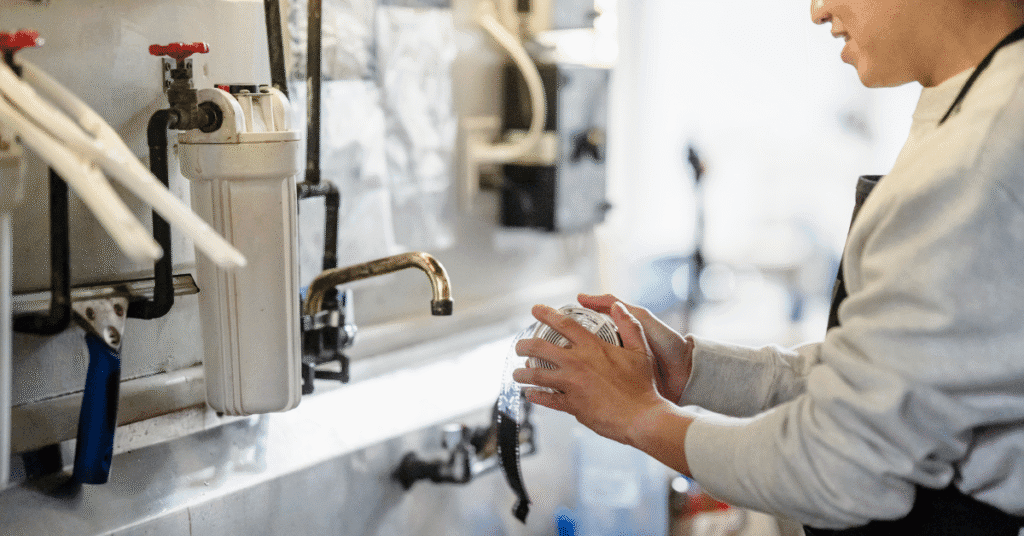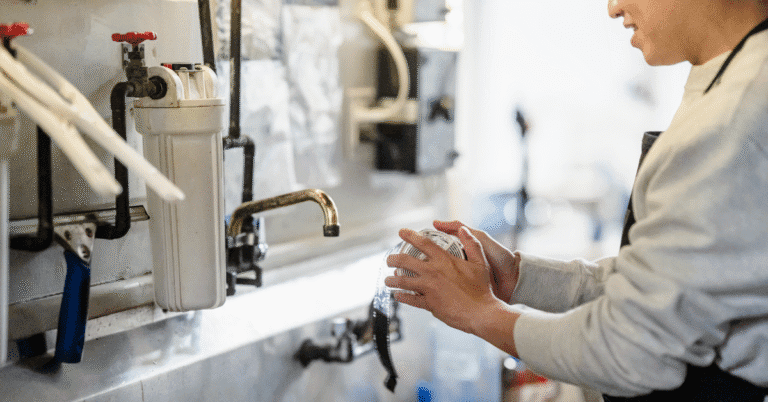
When winter temperatures plunge in Central Oregon, one of the most urgent plumbing emergencies homeowners face is a burst pipe. Freezing weather can wreak havoc on plumbing systems, causing pipes to expand and rupture. The result can be immediate flooding, extensive property damage, and costly repairs. Knowing how to react in the first crucial minutes can make all the difference. In this guide, we’ll walk you through the necessary steps to shut off water, drain your lines, and contain damage safely and efficiently.
As a trusted provider in the region, Einstein Pros emphasizes preparedness and quick action when winter plumbing emergencies strike. While professional repair will ultimately be required, these steps can help minimize destruction before help arrives.
Why Pipes Burst in Winter
Water expands when it freezes. When standing water in your pipes turns to ice, it puts significant pressure on the pipe’s walls, eventually causing cracks or full fractures. Older homes, uninsulated pipes, and exterior walls are particularly vulnerable. Basement, crawlspace, and attic plumbing often face the highest risk.
Even a small fissure can release gallons of water per minute once temperatures rise or pressure is restored. Acting quickly is essential to protect personal belongings, flooring, drywall, and electrical systems.
Step 1: Locate and Shut Off the Main Water Supply
The most urgent step when a pipe bursts is to stop the flow of water. Locate your main water shut-off valve and turn it clockwise (to the right) until it stops. In most Central Oregon homes, the main shut-off is found:
- Near the water meter
- In the basement or utility room
- On an exterior wall near the foundation
If you are unsure where your shut-off valve is, take time before an emergency to locate it. Labeling it for family members is a proactive safety measure. For guidance, consult your home inspection report or local building documents. Government resources such as the Environmental Protection Agency offer tips on locating and maintaining residential systems: EPA Water Resources.
Step 2: Open Faucets and Drain the Lines
Once the main water supply is off, residual water remains trapped in the pipes. To relieve pressure and clear them:
- Open all cold-water faucets, starting with the lowest level of the home.
- Flush every toilet to drain water from tanks and bowls.
- Open hot-water faucets to release pressure from the hot water heater.
This process helps ensure additional water doesn’t back up or leak through damaged areas. It also reduces the risk of further ruptures during rapid temperature changes.
Step 3: Shut Off the Water Heater
If the burst pipe is affecting hot water lines, turn off your electric or gas water heater. Without proper drainage, the tank could overheat or sustain damage. Refer to your manufacturer’s instructions or consult safe operation guidance from reliable resources like the U.S. Department of Energy:
U.S. DOE – Residential Water Heating.
Step 4: Contain and Control Leaks
With the water flow halted, containment becomes the priority. Use buckets, towels, or wet/dry vacuums to collect pooling water. Move furniture, rugs, and belongings out of impacted areas. The quicker you mitigate moisture, the less likely mold, mildew, and structural damage will occur.
- Place tarps or plastic sheeting over vulnerable surfaces.
- Use fans or dehumidifiers to speed up drying.
- Avoid contact with electrical outlets or wiring if water is near walls or appliances.
For serious flooding, safety must come first. Turn off electricity in affected rooms via the circuit breaker if necessary.
Step 5: Inspect for Additional Damage
Even if one pipe has burst, others may be at risk—especially if they experienced the same freezing conditions. Check other exposed pipes, joints, and valves for bulging, cracking, or frost accumulation. Common at-risk locations include:
- Exterior walls
- Uninsulated basements or crawlspaces
- Attics and garages
Taking proactive measures, such as installing foam insulation or heating tape, can help prevent future incidents. The Federal Emergency Management Agency (FEMA) offers homeowner preparedness resources: FEMA Winter Weather Safety.
Step 6: Document Damage for Insurance
Before cleanup progresses too far, take photos and videos of all damaged areas. Most homeowners insurance policies cover sudden water damage from burst pipes. Accurate documentation supports claims and can expedite financial assistance.
Keep track of:
- Damaged flooring or drywall
- Affected personal property
- Time and date of the incident
Check your policy for required reporting timelines and procedural guidelines.
Step 7: Contact a Professional for Repair
While temporary measures can reduce immediate impact, only professional repair will fully resolve the issue. Skilled plumbers can replace damaged pipe sections, restore water pressure, and assess system integrity. Einstein Pros provides experienced service throughout Central Oregon, ensuring safe, code-compliant solutions.
Preventing Future Winter Pipe Bursts
Winterizing your plumbing system is the best defense against burst pipes. Key strategies include:
- Insulate exposed pipes: Use foam sleeves or fiberglass wrap.
- Seal air leaks: Close gaps around windows, doors, and utility entries.
- Keep heat consistent: Maintain indoor temperatures above 55°F, even when away.
- Allow faucet drip: During severe freezes, let cold water drip to maintain flow.
Installing smart leak detectors or automatic shut-off valves can also provide early alerts before extensive damage occurs.
Conclusion: Preparation and Quick Action Are Key
A burst pipe during winter is one of the most stressful home emergencies, but informed action can dramatically reduce damage. Knowing how to shut off the main water supply, drain lines, and contain flooding buys valuable time until professional help arrives.
Einstein Pros encourages homeowners in Central Oregon to plan ahead, protect plumbing systems, and act swiftly when temperatures drop. With preparation and decisive action, you can protect your home and avoid costly repairs.
For more winter plumbing safety tips and emergency guidance, visit our resource center at Einstein Pros.
